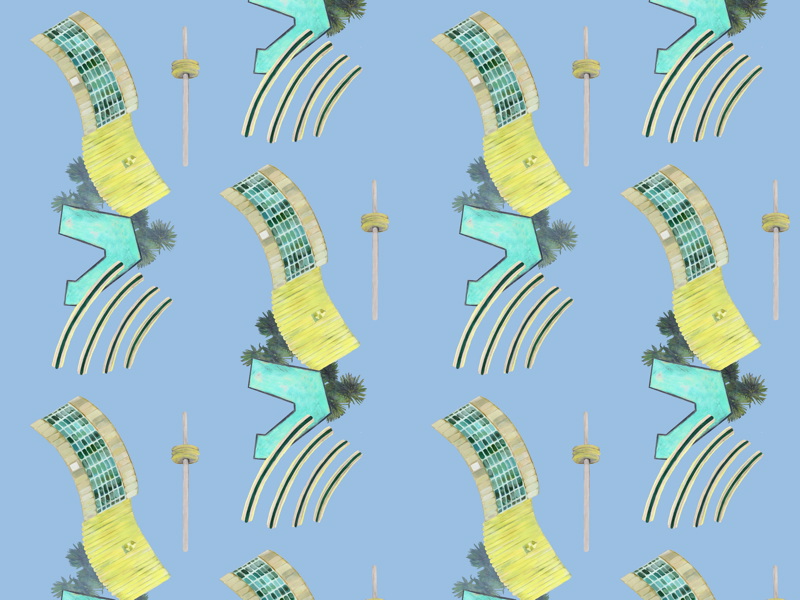Blog: Jenny Steele
The Manchester-based artist's new exhibition is inspired by modernist seafront architecture
Last year I researched examples of 1930s modernist seafront architecture in the North West of England and Scotland by site visits, archive searches and conversations with local inhabitants. After the trauma of the First World War, there was a social focus on health and wellbeing at the seaside, and new architecture was built during 1930s to accommodate the swathes of people.
After the Second World War, the British seaside never again saw the growth it has experienced in the 1930s. But since our recession in 2008, there has been a resurgence in holidaying at the British seaside and tourism has looked to refurbishing 1930s architecture to turn around its fortune. There’s more about my research on my blog.
Seaside Moderne architecture stood apart from the 19th century seaside work already lining the coast. Influenced by the International Modern style, it was typified by sweeping curves, wide open spaces and clean lines. Seaside Moderne, or Nautical Moderne, often referenced the confident form and luxury of ocean liners, but was positioned on dry land.
The interiors were significantly glamorous and luxurious, with exotic wood panelling, patterned terrazzo flooring and modern textiles. Oliver Hill, architect of the Midland Hotel in Morecambe, commissioned the designer Marion Dorn, who had designed interiors for transatlantic ocean liners and the Savoy Hotel, to design the soft furnishings for the hotel. Artists Eric Ravilious and Eric Gill were also invited to decorate the interior with reliefs and friezes. Most notably, a relief medallion was created by Gill at the top of the light saturated central stairway that is optimistically named the Stairway to Heaven.
During the Second World War, when the nation’s fears were proved right, seaside frivolity ended and this new entertainment architecture was used for the war effort. The New Brighton Palace was closed immediately and made into an ammunition factory. The Midland Hotel became a hospital, and the Stonehaven Outdoor Swimming Pool was kept open for troops, and opened on shorter hours to boost the locals’ morale.
After the damage and trauma of the war, expansion of seaside towns ceased. However, the popularity of seaside holidaymaking continued until the 1970s, when travel abroad became cheaper and seaside tourism declined. But in 2008, after years of lying in disrepair, the Midland was redesigned and relaunched by Urban Splash. The hotel became an important leader in developing the economy of Morecambe.
My new body of artwork in response to this research considers the legacy of this Seaside Moderne architecture, including not only the Midland but the Pleasure Beach Casino in Blackpool, built during the 1930s British leisure boom. This work has been presented in a solo exhibition An Architecture of Joy, at the Grundy Art Gallery, Blackpool, until 13 August.
I have turned the Grundy’s Rotunda gallery into a stage set of sorts, incorporating abstracted and repeated motifs drawn from the period, reviving the utopian optimism and restorative properties of seaside leisure. The pieces, including The Sea Breeze Was The Cure (pictured) reference the interior objects of everyday life, with an intention to blur perceived borders between fine art, applied art, furniture and interior design.

Leave a reply
Your email address will not be published.